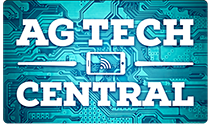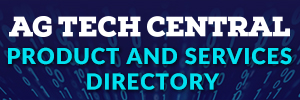THERE is powerful potential for grain growers and farm advisers to combine publicly available off-farm data, from sources such as Google Earth Engine (GEE) , Digital Earth Australia (DEA) and the Open Data Cube (ODC) initiative, with data from farm machinery to improve decision-making in the paddock, according to precision agriculture specialist, Brett Whelan.
Associated Professor Whelan, who heads the country’s longest-running precision agriculture research laboratory at the University of Sydney, believes growers can benefit from combining off-farm data with on-farm information to guide decision-making in the paddock.
He said the pool of publicly available off-farm data was rapidly increasing and could complement farm-generated data to produce a powerful, predictive model to guide farm decisions, such as nitrogen (N) budgets.
His work is part of the Future Farm 2 project, which is a GRDC investment with support from CSIRO, the University of Sydney, the University of Southern Queensland, the Queensland University of Technology and Agriculture Victoria.
A goal of the project is to create fast, flexible decision-aid software that can remove some of the risk from N management decisions for growers, by using various data streams to generate informed recommendations for fertiliser application.
“On-farm generated data on cropping, soil type and nutrients from individual growers within a locality could provide the framework for powerful models that can quickly adapt and improve from year-to-year,” Prof Whelan said.
“If we incorporate that with big data about weather and environmental conditions from off-farm data sources this could help inform decision-making and reduce risk about managing nitrogen application in regard to expected soil moisture availability to optimise yield and quality.”
Prof Whelan said the challenges were in fusing the data together to create information that was meaningful and had practical applications for growers.
“Combining large data sets generated by off-farm sources for analysis of the drivers of variability in crop performance and profit, rather than just using individual paddock data, can be very powerful,” he said.
“Putting this data together effectively can help growers more accurately estimate yield potential and match input requirements to crop responses.”
Prof Whelan said low cost information that was relatively accessible for growers included yield monitor data, vehicle performance data, and publicly available data such as satellite-based imagery.
“The majority of farms already use global navigation satellite systems, and yield monitors are becoming standard equipment on harvesters so the yield mass, grain moisture and elevation data available during harvest comes at a low cost,” he said.
“Likewise, performance data is routinely recorded by newer tractors and self-propelled implements. Data on variation in fuel use and other relevant operational parameters can be used in novel ways, for example using power output or fuel use while working with ground-engaging implements can allow growers to map changes in soil type.”
Prof Whelan said this increasing use of digital data in agriculture was being led by a combination of improvements in sensor development, computing power, data storage/delivery, data analysis techniques and reduced costs.
“These things have fuelled greater interest in data and its potential to help us on-farm. This in turn has been the catalyst for an increasing number of off-farm data sources being made publicly available at costs that won’t break the bank.”
For example, the GEE, DEA and ODC platforms provide access to a range of data layers for studying the earth’s resources.
“These extremely large and useful data sets curate data for things such as seasonal crop and soil variability, which allows us to compare the information from year-to-year which could be an invaluable tool for growers when it comes to better informed decision-making.”
This increase in the availability of digital data and processing capabilities has resulted in better data fusion techniques and machine learning as agriculture searches for new insights.
“There have been significant developments in machine learning analytical methods, which differ from mechanistic or process-driven models commonly used in cropping because they use data-driven approaches to discover relationships between variables,” Prof Whelan said.
“On-farm data from sensors currently used in precision agriculture, along with what will be an increasing variety of sources, volumes and scales and structures of off-farm data (from other local and regional farms and non-farm domains) can now be input into analysis and decision-making back on-farm.
“Growers and farm advisers need to be aware there are increasingly affordable, relevant off-farm sources for data that can genuinely inform what they are doing in the paddock.
“Ideally, we want to reach a point where the process of acquiring data is automated through to analysis and formulation of recommendations with the farm manager or adviser then having input when it comes to choosing and implementing the management options.”
Prof Whelan said sources of affordable off-farm data included options such as: CSIRO, the Bureau of Meteorology’s Gridded Daily Data; NASA’s Soil Moisture Active Passive (SMAP); Geoscience Australia’s Australia-wide airborne geophysical survey (AWAGS); and European Space Agency (ESA) Sentinel 2 – for land mapping and climate change.
Source: GRDC
For more information about Prof Whelan’s work and data sources to help manage variability that won’t break the bank, go to https://bit.ly/2IpZbOU.



HAVE YOUR SAY